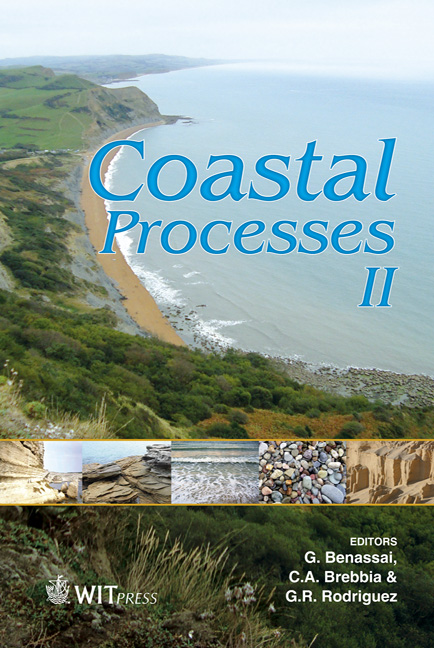Temporal And Spatial Variability Of Bottom Sedimentation For Survey Periodicity
Price
Free (open access)
Transaction
Volume
149
Pages
12
Page Range
203 - 214
Published
2011
Size
693 kb
Paper DOI
10.2495/CP110171
Copyright
WIT Press
Author(s)
P. C. Chu & N. S. Wheatley
Abstract
Bedforms determine survey periodicity. Sediment grain size, tides, currents, and wind-generated waves are influential in bedform formation. To investigate if sediment properties change over time, localized grab samples for a three-year period in San Francisco Bay were analyzed. The analysis showed little variability in sediment characteristics at a given location. A weighted suitability model based on the United Kingdom Hydrographic Office (UKHO) model has been constructed. Three layers were developed including sediment grain size, interpolated from 174 grab samples, tidal and current data from over 50 current stations and ripple height inferred from wind generated wave height. A weighting for each layer was determined. Regions indicating the presence of bedforms were assigned a low survey periodicity; as bedforms reduced, survey periodicity was increased. Keywords: survey periodicity, sediment, bedforms, San Francisco Bay, suitability model. 1 Introduction To retain maritime security, an up-to-date database of route surveys for mine or maritime improvised explosive device (IED) countermeasures are essential [1, 2]. Bedforms are an integral part of the survey periodicity problem. Sediment grain size, tides, currents, and wind-generated waves are influential in bedform formation. San Francisco Bay (Fig. 1) is a large, shallow, dynamic estuary located in California on the west coast of the U.S. It is a major international shipping port, with large container facilities, which makes it a significant, economically
Keywords
survey periodicity, sediment, bedforms, San Francisco Bay, suitability model





